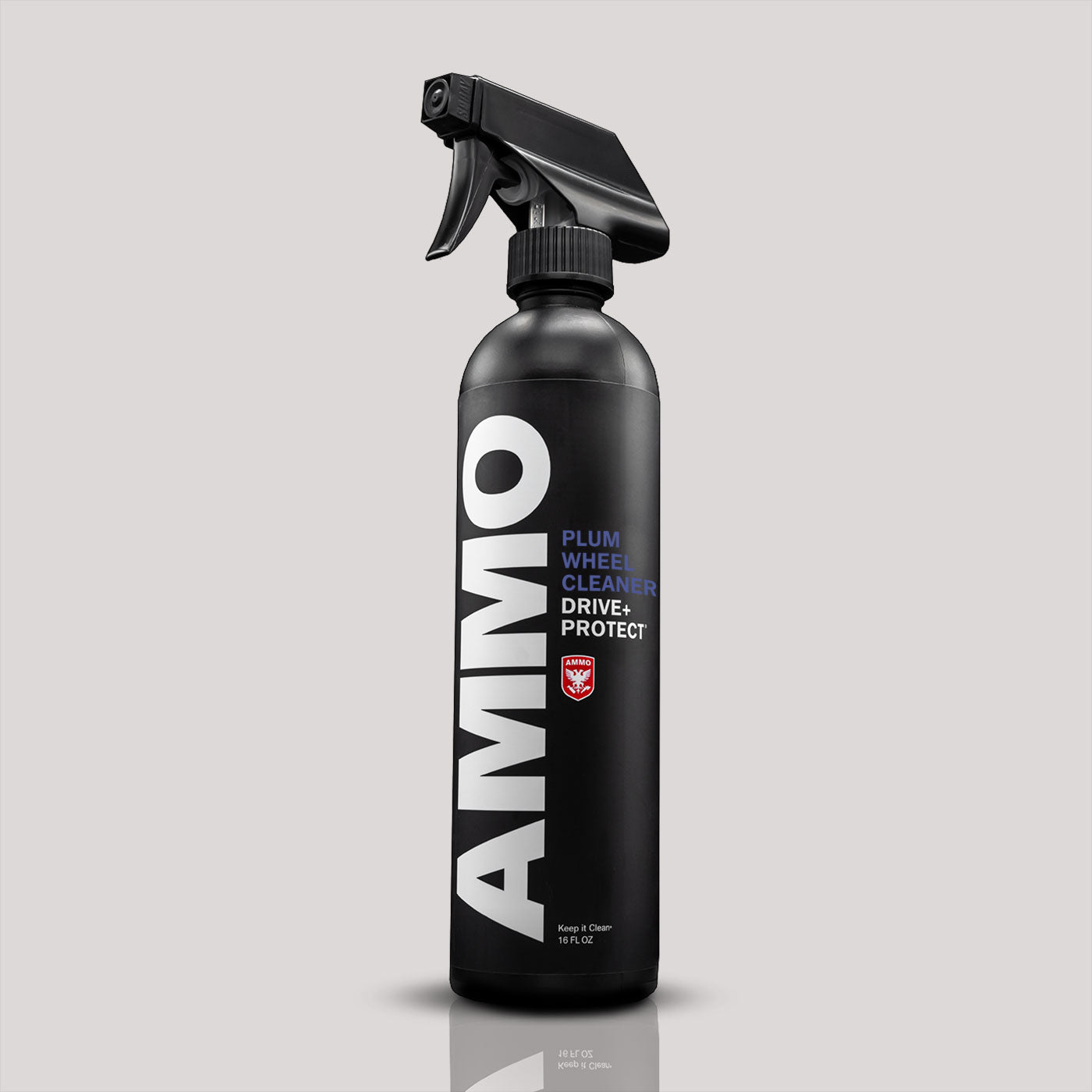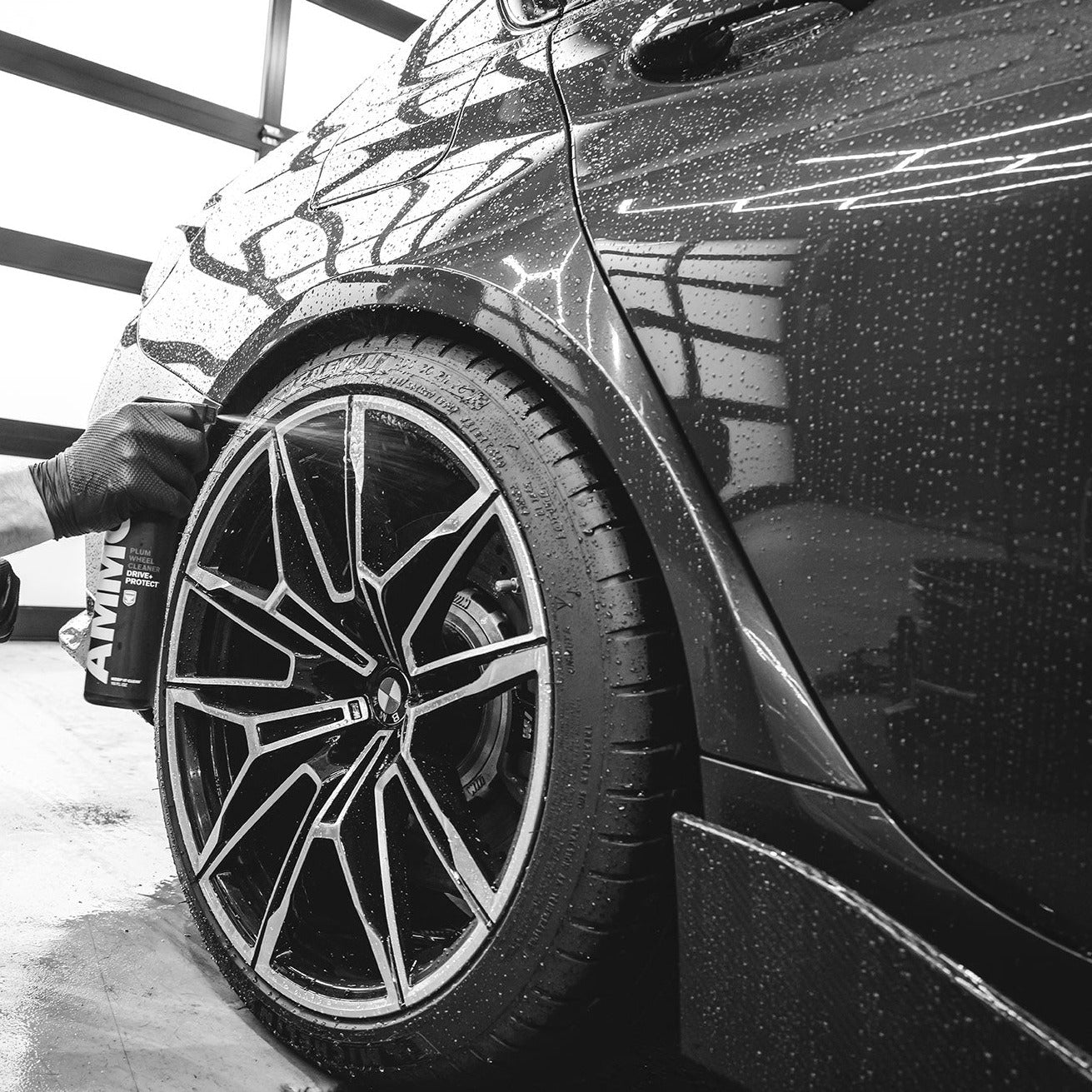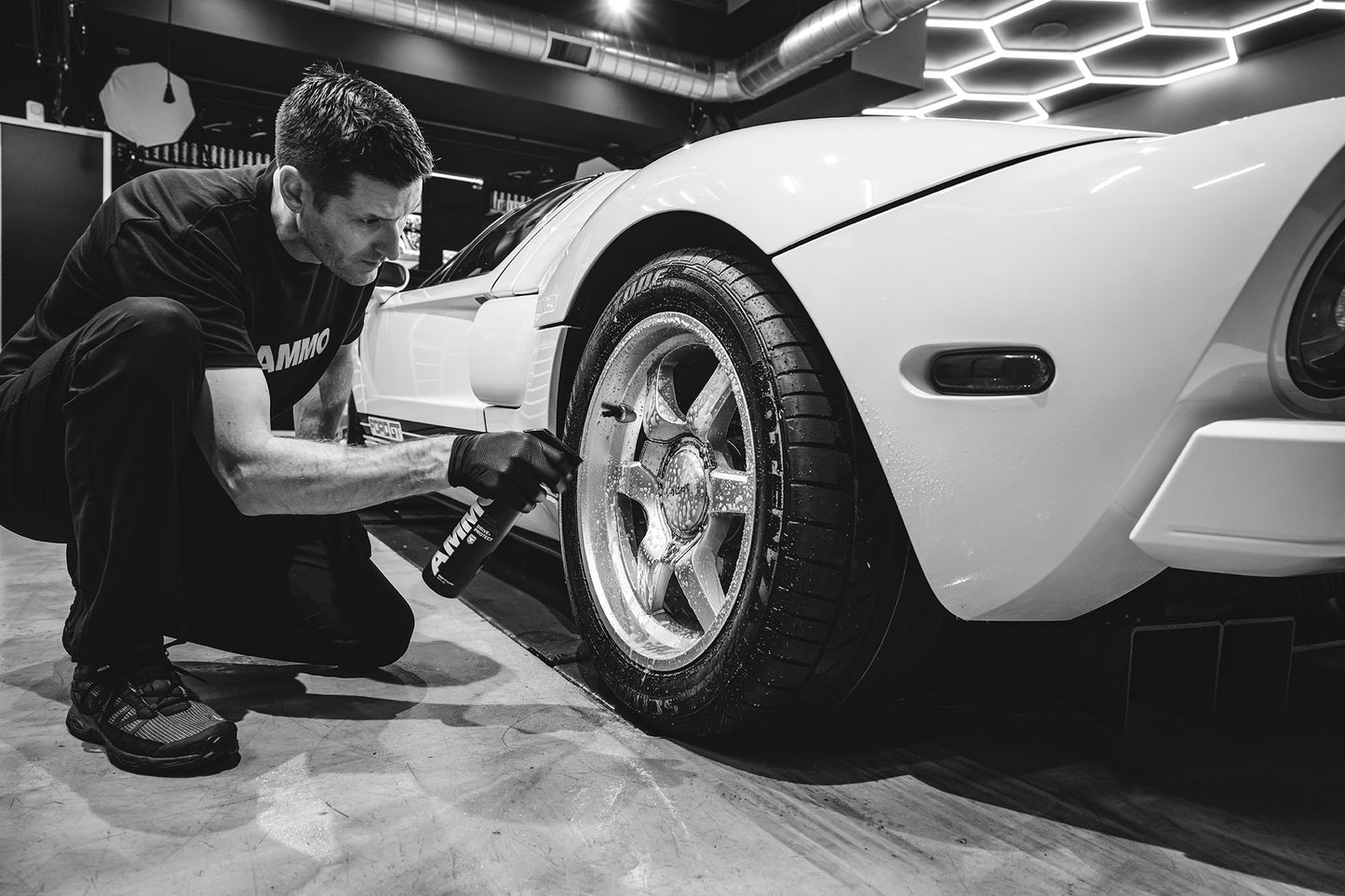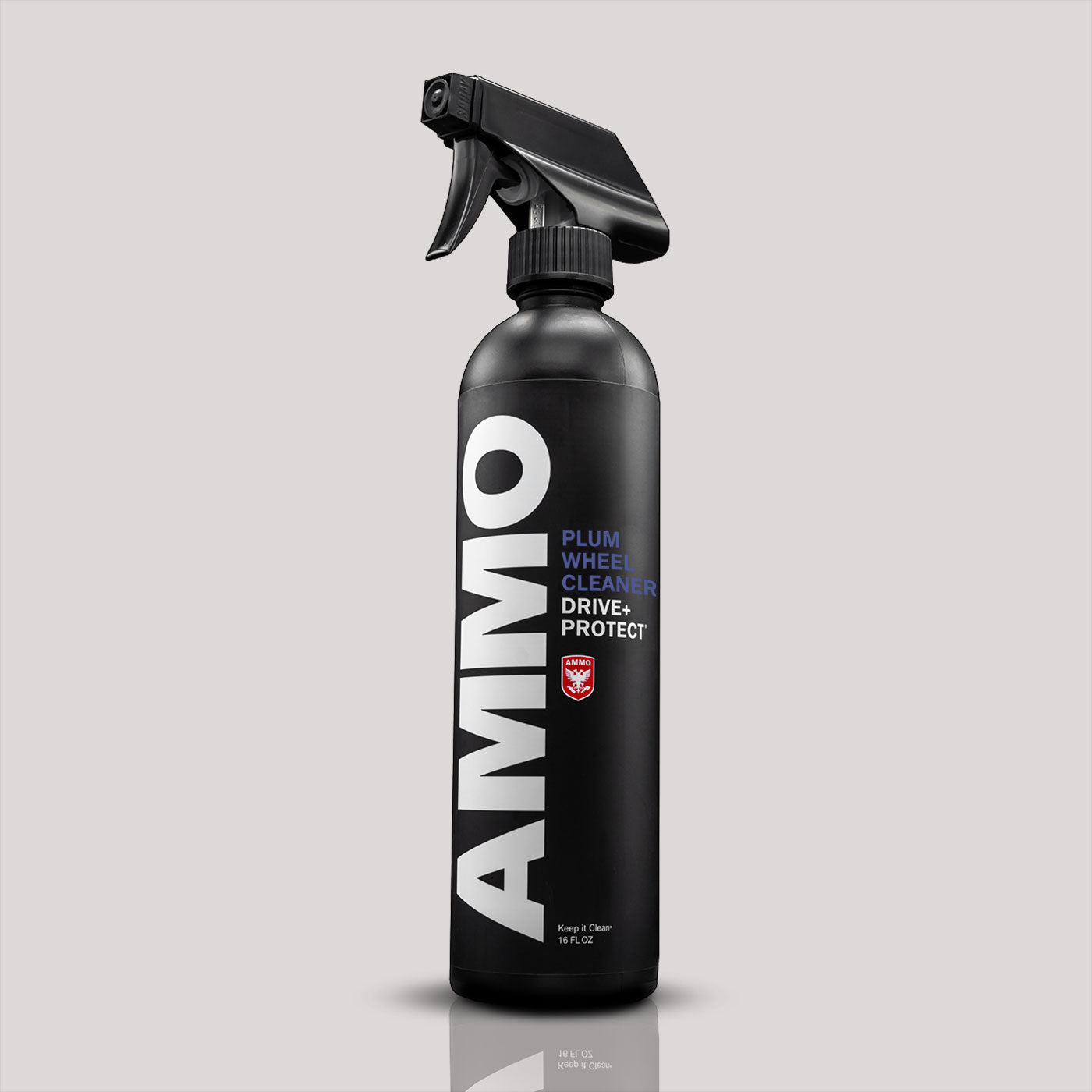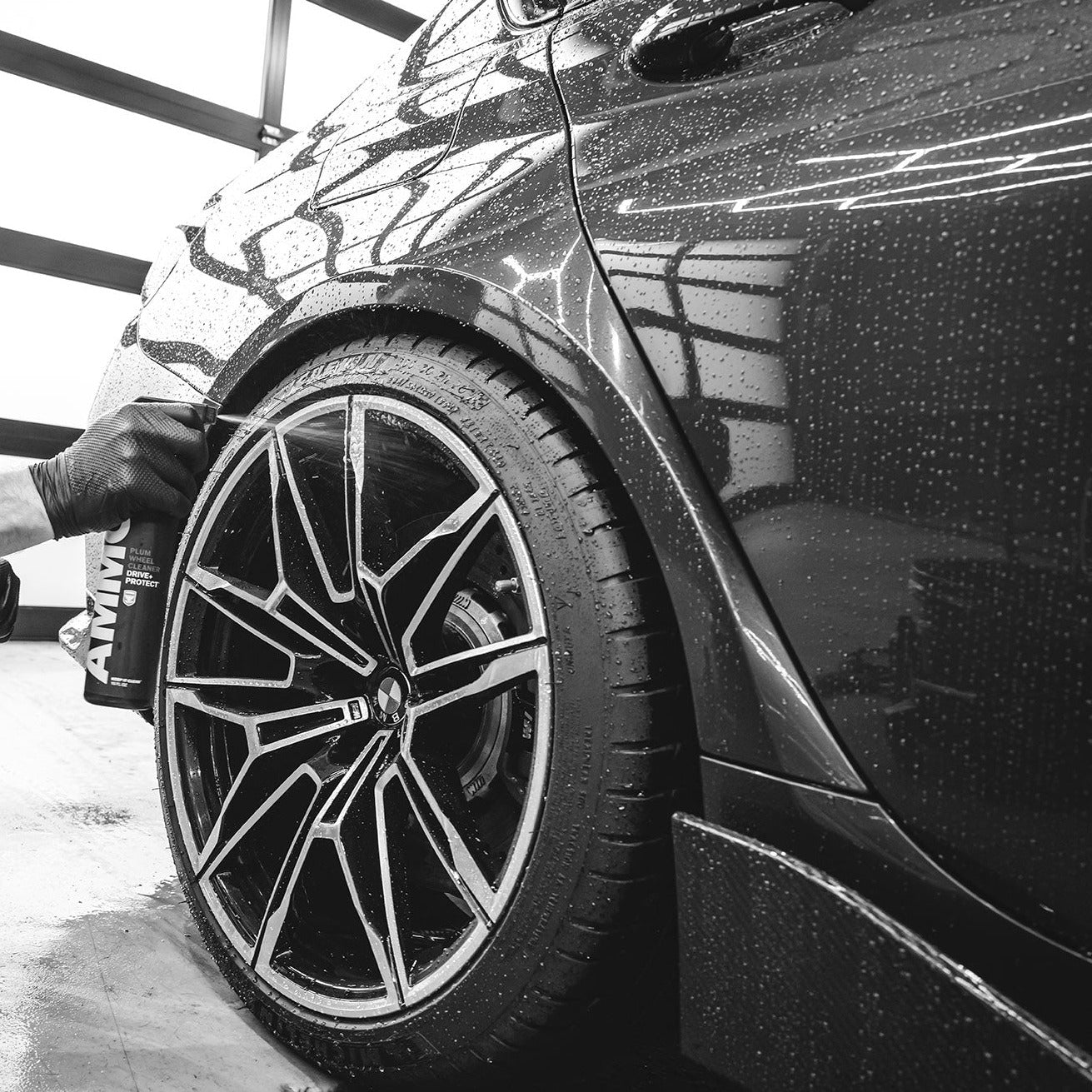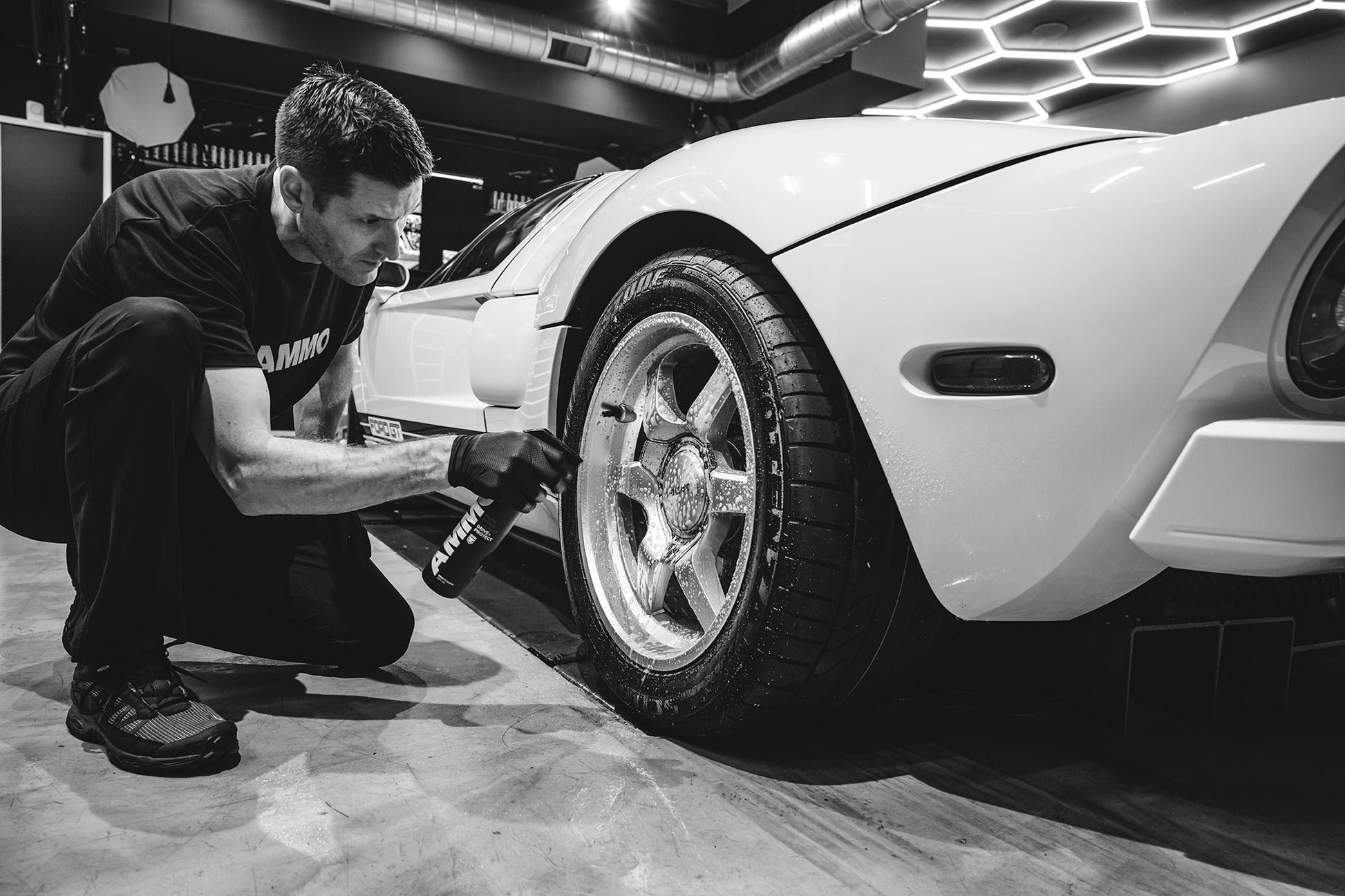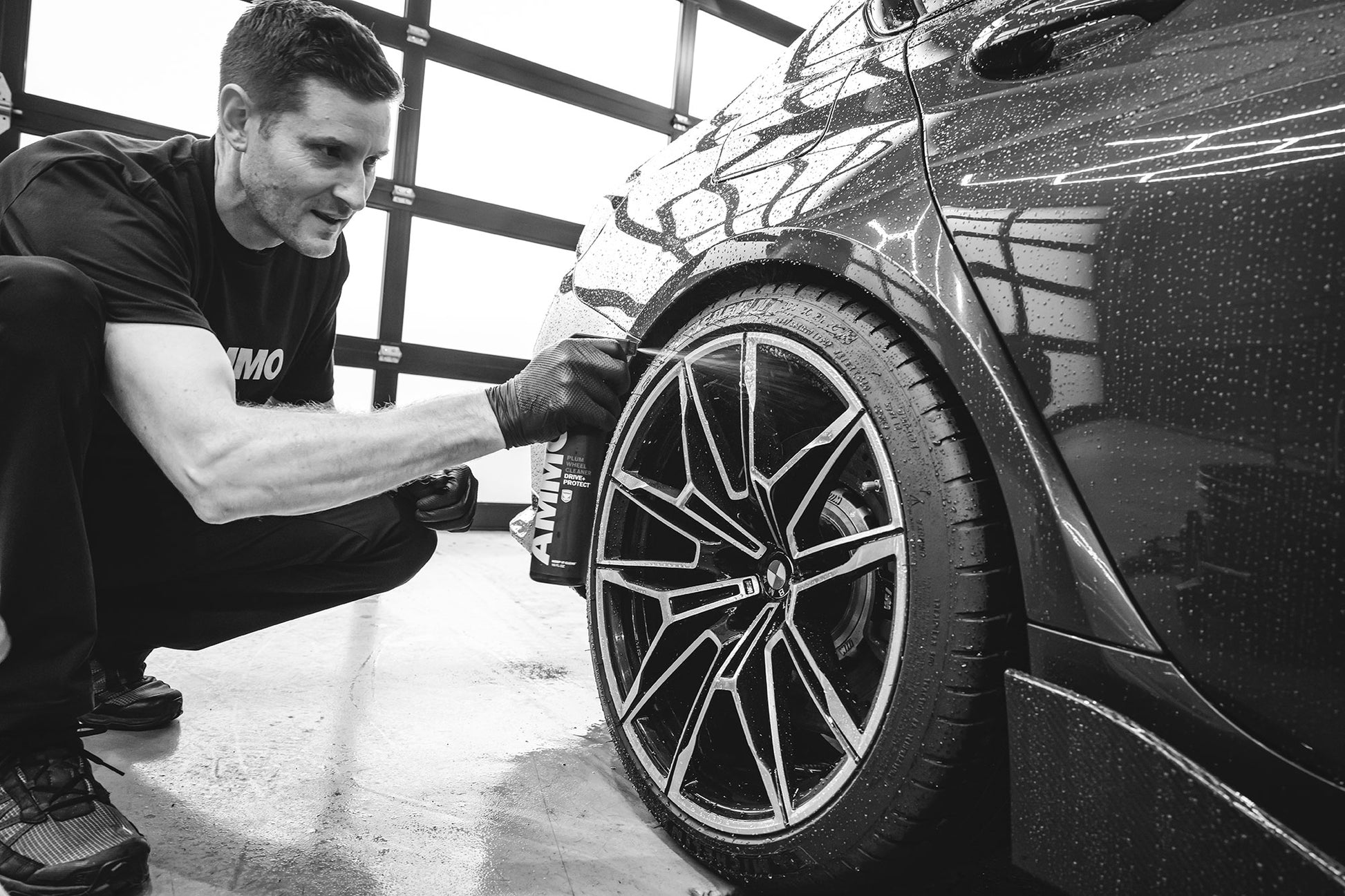AMMO Plum Wheel Cleaner
AMMO Plum Wheel Cleaner
Fast Wheel Cleaning Spray
Regular price
$20.00
Regular price
Sale price
$20.00
Unit price
per
Shipping calculated at checkout.
Couldn't load pickup availability
Safe, effective wheel cleaner.
Wheel acids are amazing at their job, but if used incorrectly, they can cause permanent damage. AMMO PLUM is different. It’s made with incredibly effective alkaline, much safer for you and your rims. AMMO PLUM encapsulates brake dust and agitates it away from the surface. We’ve removed the color-changing aspect; it was more for show than for go. But don’t worry, you’ll still see it working as it chomps down on brake dust and dirt. By the way, it smells amazing.
- Alkaline Cleaners safe for all rims (no acid)
- Releases embedded brake dust
- No chemical strong smell
- Works great on excessively dirty rims
- Use in conjunction with AMMO BRUTE for amazing results
- Scents of Plum
- Made in the USA
